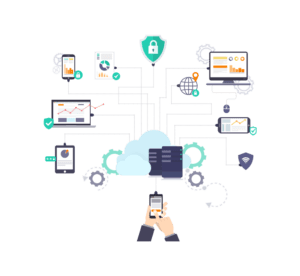Nifty Tricks for Big DIY Savings
Almost a third of tax paying Americans, according to the Pew Research Center, decide every year to do their own taxes. I can imagine them asking “What is more American than doing something yourself?” Especially if you are saving money and time by doing so. However, I would argue that some of the tax DIYers are leaving money on the table and defaulting to a suboptimal process because that is all they know. Also, the alternative seems too daunting and time consuming for the potential value. The fear of the unknown and the lack of investment in time to find the best solution will leave them in a constant state of ‘what if.’
We Start with Good Intentions
We all start with good intentions. When rugged devices first were deployed into the wild, the modern MDM solutions we know today did not exist. The pioneers of enterprise mobility had to create solutions for the problems they faced. Early in my career at Accenture we essentially built a platform on top of Windows CE that allowed applications to shared common components in order for us to rapidly build mobile applications. However, so many of the legacy devices that have served in warehouses, grocery stores, airports, etc., need to be replaced and so should the old way of managing rugged devices.
When Opting Out of MDM
In 2018, there are still organizations that are deciding a MDM is not right for their organization. It could be the comfort of keeping the same process, fear of the unknown or keeping unnecessary costs down. Below are the only three requirements you must meet when choosing not to leverage a MDM: Check out the difference between MDM with Intune vs. Microsoft Mobile Devices.
- Less than 20 devices – When managing less than twenty devices.
- One Deployment Location – These less than 20 devices are all deployed to the same site/location.
- Manual Daily Deployment – When these less than 20 devices being deployed to only one site/location are handed to the users and turned back in at the end of shift every single day.
Then you can negate a MDM because this is the manual job that such a solution would replace.
What to consider when selecting a MDM solution
When choosing to opt out of implementing a MDM, the organization is signing up for a process filled with potential gaps and ripe for human error. To guide any organization on the fence, below are a few discussion points when deciding to implement a MDM.
Security
Keeping networks secure can be a daunting task and when devices are not actively monitored it is even more difficult. With the majority of rugged mobile devices on the Android Operating System, security should be top of mind. MDMs often provide a comprehensive set of tools for keeping devices secure and some even provide alerts for when devices are out of compliance.
Visibility
Having data when making decisions and troubleshooting issues allows for decisions to be made based on facts and not emotions. Most MDMs come with a basic set of tools for reporting and device querying. We all make mistakes and sometimes devices disappear and break. Do you know who had the device last? Do you want to know?
Device Consistency
In the past, many issues with devices in the field could be traced back to something slightly different with a particular device. A wrong application version, a manually changed wifi network or even someone changing the date and time on the device can cause an issue. Having consistency around settings, application versions and blocking access to features is an important feature of MDMs.
Remote Troubleshooting
Most MDM solutions have a remote control/view feature built in allowing a remote view and even control of a device over the internet. This feature is great when supporting devices across multiple locations, providing support from a remote location. The biggest value of this feature is when a User out in the field is able to reproduce a defect during a remote session.
Simplicity
Having every bell and whistle that a MDM might offer is an extreme case. Evaluate what is truly necessary and do not implement a complex set of features if your deployment use cases are not complex. The goal should be to implement a simple, repeatable and teachable process for staging, managing and troubleshooting devices.
Key Takeaways
 For some organizations, the overhead of implementing a MDM can be perceived as too expensive on face value. However, I believe technology is a tool that should improve our quality of life and effectiveness in the workplace. Consider the following three points when deciding to replace a process with technology:
For some organizations, the overhead of implementing a MDM can be perceived as too expensive on face value. However, I believe technology is a tool that should improve our quality of life and effectiveness in the workplace. Consider the following three points when deciding to replace a process with technology:
- What happens if I get hit by a bus – Please do not be triggered, but the bus factor should be considered. If you are the sole owner of an important process at the very least you should cross train another co-worker. Leveraging technology like a MDM will reduce (and should eliminate) the possibility of losing a key component to managing devices.
- Could I be doing something more valuable with my time This is a tricky one to measure and it requires some faith. However, by having some additional bandwidth, work will continue to fill the time allotted. With a renewed focus on how to invest this new found time, look for opportunities to add value to a teammate, create structure and/or automate a similar manual process or use this time for self development.
- Am I just being selfish
Let’s be honest. Some adults never learned how to share their toys as kids and unfortunately this important life lesson is still a gap in the workplace. We have worked with individuals that refuse any help or to participate in the sharing of knowledge for key processes.
There are companies that are using the same software on the same types of rugged devices before MDM and EMMs were popular. With these legacy devices losing support from vendors like Microsoft, a transition to a modern platform is inevitable. Do not let the fear and uncertainty of change block the opportunity for efficiency.

